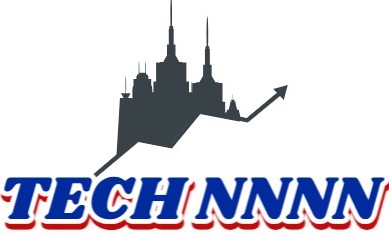Framework for Talent Acquisition 3792512796

The Framework for Talent Acquisition 3792512796 offers a strategic approach to attracting and retaining top talent. It emphasizes the alignment of recruitment strategies with organizational objectives, ensuring that efforts are not only effective but also relevant. By harnessing technology and data analytics, organizations can enhance their hiring processes. However, the true potential of this framework lies in its ability to create a culture of engagement, raising the question of how this can be effectively implemented.
Understanding the Framework for Talent Acquisition
The talent acquisition framework serves as a strategic blueprint for organizations seeking to attract and retain top talent in a competitive landscape.
By defining candidate personas, companies can tailor their recruitment efforts to meet specific needs and preferences.
Effective onboarding strategies further enhance this process, ensuring that new hires integrate smoothly and feel valued, ultimately fostering a culture of engagement and commitment within the organization.
Aligning Recruitment Strategies With Organizational Goals
Aligning recruitment strategies with organizational goals is essential for cultivating a workforce that drives success.
By clearly defining organizational objectives and implementing targeted sourcing techniques, companies can attract candidates who not only fit the role but also resonate with the company’s mission.
Moreover, measuring recruitment success through quantifiable metrics ensures that these strategies remain effective and adaptable to evolving business needs.
Defining Organizational Objectives
Effective recruitment strategies hinge on a clear understanding of organizational objectives, as these goals serve as the foundation for attracting the right talent. Achieving organizational alignment and objective clarity allows companies to tailor their recruitment efforts effectively.
| Objective | Alignment Strategy | Desired Outcome |
|---|---|---|
| Increase sales | Hire sales-driven talent | Revenue growth |
| Enhance culture | Recruit culture-fit candidates | Improved employee retention |
| Expand market | Source diverse skill sets | Competitive advantage |
| Innovate products | Attract creative thinkers | Product development |
Targeted Sourcing Techniques
A strategic approach to targeted sourcing techniques can significantly enhance recruitment outcomes by directly aligning with an organization’s objectives.
Measuring Recruitment Success
Success in recruitment is best measured through a strategic alignment with organizational goals, ensuring that hiring practices directly contribute to broader business objectives.
Employing recruitment metrics, such as time-to-hire and quality-of-hire, alongside candidate feedback, provides insight into the effectiveness of recruitment strategies.
This alignment not only enhances organizational performance but also fosters an environment where talent thrives, empowering individuals to pursue their professional aspirations.
Leveraging Technology in the Hiring Process
In the competitive landscape of talent acquisition, organizations increasingly turn to AI-powered recruitment tools and virtual interview platforms to enhance efficiency and decision-making.
These technologies not only streamline the hiring process but also enable more accurate candidate assessments, ultimately aligning talent acquisition efforts with strategic objectives.
Embracing such innovations positions companies to attract top talent in a rapidly evolving market.
AI-Powered Recruitment Tools
AI-powered recruitment tools have emerged as transformative assets in the hiring process, revolutionizing how organizations identify and engage talent.
By utilizing AI algorithms for candidate matching, they enhance skill assessment and optimize interviews. Automation benefits streamline candidate sourcing while recruitment analytics facilitate predictive hiring, further ensuring bias reduction.
Additionally, chatbots integration enhances communication, creating a more efficient and inclusive recruitment experience.
Virtual Interview Platforms
The evolution of recruitment technology continues with the rise of virtual interview platforms, which serve as pivotal tools in enhancing the hiring process.
These platforms offer significant virtual interview benefits, such as increased accessibility and efficiency in remote candidate evaluation.
Data-Driven Insights for Informed Hiring Decisions
While many organizations still rely on traditional hiring practices, leveraging data-driven insights has become essential for making informed hiring decisions. By utilizing data analytics and hiring metrics, companies can identify trends and optimize recruitment strategies effectively. This approach ensures a more strategic alignment between talent acquisition and organizational goals.
| Metric | Definition | Importance |
|---|---|---|
| Time to Hire | Duration from job posting to hire | Assess recruitment efficiency |
| Quality of Hire | Performance of new hires | Evaluate hiring effectiveness |
| Candidate Source | Origin of successful candidates | Optimize sourcing strategies |
| Offer Acceptance Rate | Percentage of accepted offers | Gauge candidate interest |
| Diversity Metrics | Representation of different demographics | Promote inclusive hiring practices |
Enhancing Candidate Engagement and Experience
Data-driven insights not only enhance hiring decisions but also play a pivotal role in enriching the candidate engagement and experience throughout the recruitment process.
Effective strategies include:
- Soliciting candidate feedback to refine processes.
- Personalizing recruitment communication to foster connections.
- Utilizing analytics to track engagement metrics.
These approaches empower organizations to create a more inviting and responsive environment for potential hires, enhancing overall satisfaction.
Building a Diverse and Skilled Workforce
To build a diverse and skilled workforce, organizations must adopt a strategic approach that transcends traditional hiring practices. Emphasizing diversity initiatives alongside skill development fosters innovation and adaptability. By reshaping recruitment frameworks, companies can attract varied talents, ensuring a richer organizational culture.
| Diversity Initiatives | Skill Development |
|---|---|
| Inclusive Hiring Practices | Continuous Training |
| Diverse Talent Pipelines | Mentorship Programs |
| Cultural Competence Training | Cross-Functional Roles |
| Employee Resource Groups | Upskilling Workshops |
Conclusion
In conclusion, the Framework for Talent Acquisition 3792512796 offers organizations a strategic blueprint for navigating the complexities of modern recruitment. By aligning hiring practices with overarching business objectives, leveraging cutting-edge technology, and utilizing data analytics, companies can cultivate a dynamic workforce. Just as the invention of the wheel transformed transportation, embracing this framework can revolutionize talent acquisition, ensuring organizations not only attract but also retain the best talent in a competitive marketplace.



